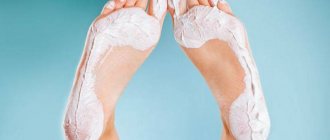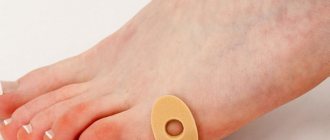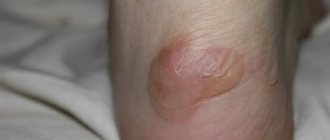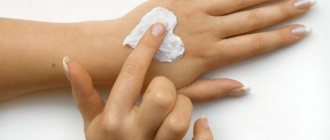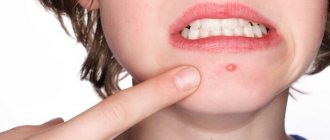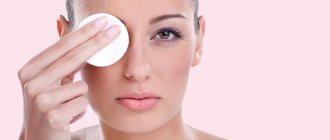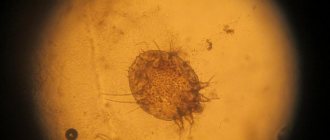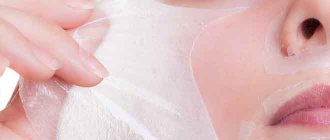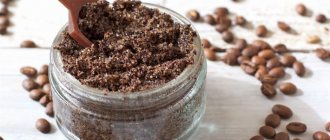Callus can be very painful. This is a type of disease called hyperkeratosis, in which the skin thickens.
The callus itself is a denser, small area of the epidermis with clear boundaries and almost smooth edges. It usually occurs where bony protrusions press on soft tissue. Both pharmaceutical drugs and folk remedies are used for treatment.
Features of the pathology
A callus looks like a round, slightly protruding formation on the skin, with a noticeable darkening in the center. It often looks like a blackhead, which turns out to be a hard and translucent rod consisting of dead skin cells. Sometimes it is called the root, and the keratinized area on the surface of the skin is called the cap.
Callus
The growth of a callus resembles a plantar wart in appearance. They are similar in their symptoms. For example, when you press on a callus, pain occurs because the skin nerve endings located between the hard core and the bony protrusion are compressed. When pressing on the plantar wart, pain is also felt. The difference is that the wart hurts not only with vertical pressure, but also with lateral pressure.
Plantar wart
A brownish pattern formed by microscopic hemorrhages from capillaries is visible above the wart, but in another case it is not there. A callus is always an isolated phenomenon. Warts can be grouped together, located close to the largest one.
The reasons for the appearance of callus are the same as for other types of this formation. Most often they occur due to unsuitable shoes. Also, in women, they are formed due to wearing high-heeled shoes, since in such models the load is not distributed correctly, as a result, the pressure on the forefoot increases, which leads to a problem.
Additional risk factors are diabetes and being overweight.
Sometimes the rod formation can be a complication of the usual “wet” blister, which is formed when the skin is rubbed by hard shoes. Prolonged compression and other mechanical effects, trauma to the skin with a foreign object such as a splinter lead to the appearance of a problem. Sometimes a callus is the result of a viral or fungal infection.
Most often, such dry calluses appear on the feet, but they also appear on the palms from heavy physical work. On the feet, calluses most often form in the area between the big and second toes, the little toe and the fourth toe. Sometimes it forms on the heel. In some cases, a callus appears in the same place as the wart, that is, on the sole, under the big toe.
Possible complications
If there is no treatment to eliminate the callus, the following complications may develop:
- transition of callus to chronic form;
- aesthetic discomfort when wearing open summer shoes;
- constant lameness;
- detachment of the nail plates if the callus is caused by a fungal infection;
- poor posture.
Chronic dry callus on the little finger
The most dangerous thing is the penetration of infection into the blood through cracks in the callus. Dry callus often does not cause pain symptoms; on the contrary, it protects the damaged area from external influence.
If the pathology is not treated, the stratum corneum will constantly thicken, which in the future is dangerous due to the development of deep cracks and the penetration of infection into them. Before choosing therapy, it is necessary to determine the cause of the pathology (physical or pathological). It should be noted that more often than in other places on the foot, callus occurs on the little toe.
Keratolytic agents against calluses
Keratolytics are substances that cause rapid and active exfoliation of dead skin cells from the surface of the skin by breaking the bonds between dead particles of the epidermis. They are used in the treatment of various skin diseases, including calluses.
The most popular keratolytics are salicylic and lactic acids, urea, resorcinol, citric, boric and benzoic acids, etc. In their pure form, they are used extremely rarely, since the side effects of most of them are the development of dermatitis and ulceration of the skin.
Preparations based on salicylic acid have become especially widespread. They are produced in the form of powders with an active ingredient concentration of 2-5%, alcohol solutions (1-2%), ointments and pastes (with a concentration of up to 10%).
Many popular keratolytic agents are combination medications that contain several active ingredients. Antimozolin contains both salicylic and lactic acids. The combination of drugs also includes Bensalitin ointment.
Rules for the use of such funds:
- Apply to the skin only after steaming for several hours.
- The top of the treated area is sealed with adhesive tape.
When it is removed, you can try to remove the growth using a pumice stone or nail scissors, but it is better to consult a surgeon for removal. You should not pierce the callus, since such a mistake will not only cause pain, but also the possibility of infection in the wound.
To eliminate such formations, a special callus plaster is used. It is impregnated with salicylic acid. Such patches cannot be used if there are open wounds on the skin. The product may also contain paraffin, sulfur, and rosin. These components also help soften the cap and core of the callus. A classic example of an anti-callus patch is Salipod.
Stop callus based on celandine juice is also popular. The liquid is applied pointwise to the affected area.
What is it: description and photo
Corns, or dry calluses, are compactions of the surface layer of the skin that occur in areas of increased production of epidermal cells. The accumulation and growth of skin compactions occurs as a result of damage to the skin and subcutaneous tissues.
Most often, changes in skin integrity are caused by compression resulting from improper distribution of load and mechanical irritation. Below is a photo of the disease.
Balm Karavaev for eliminating formations
Another popular remedy is Karavaev’s balm. Medicines are sold under several brand names, but only one has been officially registered - Vitaon.
Balsam Karavaev is a plant-based preparation. It contains essential oils of pine, cumin, rose hips, extracts of yarrow and St. John's wort, as well as celandine, which is considered an excellent remedy for warts and calluses. Vitaon also contains calendula extract. The balm has anti-inflammatory properties and helps heal wounds. But its effectiveness is lower than that of keratolytic agents.
Treatment depending on location
The easiest way to treat a callus on the foot. In this case, there are practically no restrictions when choosing methods.
If the callus is located on the little finger, there are certain difficulties, since it is more difficult to fix the patch on it, and not all surgical methods of removal are allowed.
If the subcutaneous callus is located between the fingers, then it is especially difficult to deal with it. In this case, surgical removal in a clinic or the use of improvised means in the form of various phytotherapeutic recipes is indicated.
In the first case, we are talking about cryodestruction, that is, the formation on the toe is destroyed by exposure to liquid nitrogen. Under its influence, after several sessions, the rod and ingrown cap fall off on their own. The whole procedure takes little time, after which you can immediately return to your normal rhythm of life. You cannot try to cut it off yourself. This will only injure the callus.
There are home methods that are suitable for treating both interdigital formation and similar problems on the foot. In addition to classic baths, compresses based on aloe leaves are used. It is more convenient to fix them between the fingers, where they act as a plaster. A hard-to-reach place can be lubricated with a mixture of propolis in alcohol and various essential oils, covering it with a bandage.
Steam baths
Such a simple method of treating calluses as steam baths can be very effective.
Baths can be used as the main treatment, if the callus has not yet reached alarming proportions, and as an additional treatment if you are simultaneously treated with pharmaceuticals.
Baths perfectly soften the affected skin on the little finger; usually, after one or several procedures, the callus can be eliminated. After the procedure, it is necessary to stick a patch to the affected area.
Folk remedies against calluses
Removing the core growth is also possible using folk remedies.
All alternative medicine recipes are based on softening the internal callus, which falls out on its own or is carefully removed after treating the skin with pumice.
Baths
Soap and soda baths can only be used for calluses with a relatively short stem:
- Take 2-3 tbsp. l. soda and the same amount of grated soap (you can use liquid soap) per 1 liter of water.
- Keep your foot in the bath for 30 minutes.
After this, it is not necessary to rub your foot with a pumice stone. If the callus is relatively fresh and its root is short, then after several such procedures (usually 5-10 sessions are required) it can go away on its own.
For mustard baths, several tablespoons of mustard powder are diluted in hot water (up to 1 liter). The duration of one procedure is 30 minutes.
Vinegar essence
It is used to lubricate the “cap” of the callus. For the procedure, take undiluted essence, but in a very small amount.
Usually 4-5 such sessions are enough to remove even deep calluses.
Celandine juice
This is a popular folk remedy, but you need to be careful when using it at home, as it causes a chemical burn. Pharmacies sell ready-made celandine juice, but you can get it yourself by cutting off the tip of the plant. The resulting liquid should be applied to the callus.
Another recipe:
- Pass the plant through a meat grinder.
- The resulting mass is wrapped in a piece of gauze and the juice is squeezed out of it.
- Treat the callus for several days in a row.
Onion or garlic
These plants are used to treat internal calluses. You can use onion or garlic juice or apply crushed pulp from them to form.
After 10-15 procedures, the core of the callus comes out and the “cap” falls off.
Prune compress
For this:
- Take several fruits.
- Steam with boiling water.
- Remove the bone and boil in milk for 5 minutes.
Compresses made from such prunes are applied to an already steamed callus and left until it cools completely, usually this takes up to 45 minutes.
Honey and radish
For the product:
- The ingredients are mixed in equal proportions (10 g each of honey and radish, grated).
- Add a little tea tree essential oil (up to 10 drops).
- The product is applied to steamed skin.
Since it causes a chemical burn, the tissue around the problem area is pre-sealed with a plaster. It is recommended to apply this product throughout the night.
Features of treatment in a child
A callus can also appear in a child. In this case, the methods for removing it will be different. The fact is that children have more delicate skin. Even if a corn or callus has formed on it, it will still be more sensitive than that of an adult. For children under 10 years of age, not only salicylic acid in solution form is not used, but also its preparations, including patches like Salipod.
Home remedies can be widely used, for example, the warm soap and soda baths described above, lotions made from aloe juice (to obtain it, take a plant older than 3 years) or apple cider vinegar solution. Such compresses can be left overnight so that they have time to take effect.
It is recommended to visit a doctor. The pediatrician will refer the child to a surgeon or podiatrist if the callus has developed a deep root, and it cannot be removed with compresses and pumice. A doctor is consulted when the area of the formation is large or it becomes especially painful.
Pathogenesis
A callus does not form in one day.
The process of its formation takes place in several stages:
- In the first week after a fracture, a person develops a provisional callus.
- Then the process of formation of osteoid tissue begins. Over a short period of time, the callus ossifies.
- The next stage in callus development is the formation of a cartilaginous callus.
- Over time, the cartilage becomes denser, causing the patient to develop a callus.
Before a person can begin to form a callus, the injured bones will need to heal. In general, callus formation is a normal process that accompanies tissue regeneration.
